History
Marcona began to become relevant after the mid-nineteen hundreds (1952) [2] when iron was first excavated from the mineral deposits and construction of the San Juan pier by the United States mining company Marcona Mining Company [3] was completed. However, it is important to mention that archaeological remains in the areas of San Nicolás and San Fernando, have been found which suggests the presence of the ancient Peruvians by these desert areas.
There also occurred numerous marine accidents in Marcona, starting with the wreck of the BAP Rimac (1855). More than five hundred people perished while only about 20 managed to survive, including the Peruvian writer Ricardo Palma. [4] Thirty years later a brigantine "Italia" was lost in that area at the beginning of the 20th century.
In 1870, the wise Italian Antonio Raimondi published the existence of an iron deposit in the plains of Marcona. Years later, in 1915, the first explorations of the zone were carried out under the guidance of a local Justo Pastor. He guided the group of engineers toward the plains where the iron was supposed to exist. In 1925 the government president Augusto B. Leguía declared the Marcona National Reserve in order to allow future exploitation.
During the first decades of the 20th century various fishermen from Pisco and Callao arrived in Marcona attracted by the abundance of fish and seafood that was found in the San Nicolás and San Juan bays. These men gave rise to the small fishing coves that exist today.
In 1943 the Peruvian state created the Corporación Peruana del Santa in order to exploit the carbon and iron reserves. This established an iron and steel works in Chimbote, Peru. Subsequently, already having proved the huge reserves of iron in Marcona, a group of American companies (including from Utah) formed the North American mining Marcona Mining Company, giving rise to the formation of the small mining camp around the port of San Juan.

The Antofagasta Region is one of Chile's sixteen first-order administrative divisions. The second-largest region of Chile, it comprises three provinces, Antofagasta, El Loa and Tocopilla. It is bordered to the north by Tarapacá, by Atacama to the south, and to the east by Bolivia and Argentina. The region's capital is the port city of Antofagasta; another one of its important cities is Calama. The region's main economic activity is copper mining in its giant inland porphyry copper systems.
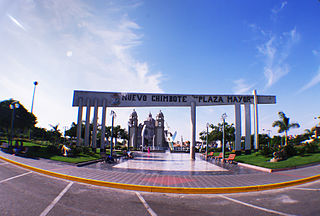
Chimbote[tʃimˈbote](listen); Quechua: Chimputi) is the largest city in the Ancash Region of Peru, and the capital of both Santa Province and Chimbote District.

The Humboldt penguin is a South American penguin living mainly in the Pingüino de Humboldt National Reserve in the North of Chile, although its habitat comprises most of coastal Peru. Its nearest relatives are the African penguin, the Magellanic penguin and the Galápagos penguin. The Humboldt penguin and the cold water current it swims in both are named after the explorer Alexander von Humboldt. The species is listed as vulnerable by the IUCN with no population recovery plan in place. The current population is composed of 32,000 mature individuals and is going down. It is a migrant species.

Ica is a department and region of Peru. It borders the Pacific Ocean on the west; the Lima Region on the north; the Huancavelica and Ayacucho regions on the east; and the Arequipa Region on the south. Its capital is the city of Ica.

The Economy of the Empire of Japan refers to the period in Japanese economic history in Imperial Japan that began with the Meiji Restoration in 1868 and ended with the Surrender of Japan in 1945 at the end of World War II. It was characterized by a period of rapid industrialization in the late nineteenth and early twentieth centuries, and the dominance of a wartime economy from 1938–1945.
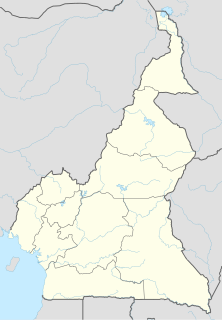
Mbalam is a place in Cameroon near the southern border with the Republic of the Congo where there are significant deposits of iron ore. The mining company is Sundance Resources Limited.
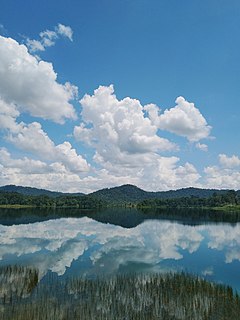
Bukit Besi is a small mining town in Dungun, Terengganu, Malaysia, famous for its high quality iron ore.

Charles Wesley Robinson was an American entrepreneur who was involved with many successful business adventures in the mining and shipping industry. He also served as United States Deputy Secretary of State. He was president of CBTF Co. and M Ship Co., a board member of Nike and Chairman of Nike’s Finance Committee.
Cleveland-Cliffs Inc., formerly Cliffs Natural Resources, is a Cleveland, Ohio-based company that specializes in the mining, beneficiation, and pelletizing of iron ore, as well as steelmaking, including stamping and tooling. It is the largest flat-rolled steel producer in North America.

Shougang Group Co., Ltd., formerly Shougang Corporation is a Chinese state-owned steel company. Based in Beijing, its the Shijingshan district operations were moved out of the city prior to the Olympics due to concerns over pollution.

The name El Oro de Hidalgo, is not from Nahuatl, like most other municipality names in the state, but from Spanish, and simply means "the gold." It has subsequently been given an alternative Nahuatl name of "Teocuitlatl," meaning "sacred excrement," referring to gold. Its seal, in the form of an Aztec glyph, contains elements referring to gold and to caves, of which there are many in the municipality. The municipality is located in the northwest of the State of Mexico, 96 km from the state capital of Toluca, and is bounded by the municipalities of Temascalcingo to the north, Jocotitlán to the east, San Felipe del Progreso and San José del Rincón to the south, and by the state of Michoacán to the west. As of 2005, the municipal seat with the formal name of El Oro de Hidalgo had a population of 5,797, and the municipality of El Oro had a population of 31,847. While it made its name as a major gold and silver mining town from the 17th to the early 20th centuries, the mines have since been tapped out and the town is turning to tourism for economic development.

Mariano Eduardo de Rivero y Ustariz was a prominent Peruvian scientist, geologist, mineralogist, chemist, archaeologist, politician and diplomat. His publications about his discovery of Humboldtine, demonstrating the existence of organic-minerals; about deposits of copper and sodium nitrate (saltpeter) near Tarapacá in the Atacama Desert; about bird-guano and coal in Peru and their possibilities of industrialization as well were forward-looking and made him a pioneer of mining education in South America and the most notable Peruvian scientist of the 19th century.

Although the subsoil of Ivory Coast contained many other minerals, none existed in commercially exploitable amounts, given the high costs of extraction. Mining contributed only 1 percent of GDP in 1986.
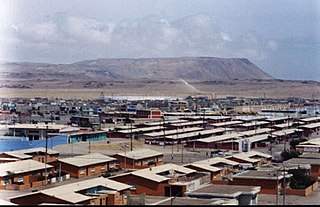
Marcona District is one of five districts of the province Nazca in Peru. The district capital is San Juan de Marcona a port on the Pacific coast.
Ferrexpo plc is a Swiss-based commodity trading and mining company which is the third largest exporter of iron ore pellets in the world. Ferrexpo's operating base is in central Ukraine, where it operates three iron-ore mines and an iron ore pellet production facility. The company's trading office is located in London where it is listed on the London Stock Exchange and it is a constituent of the FTSE 250 Index and FTSE4Good Index.

The mineral industry provides a major source of economic growth in Peru's national development. In 2006, Peru occupied a leading position in the global production of the following mineral commodities: fourth in arsenic trioxide, third in bismuth, third in copper, fifth in gold, fourth in lead, fourth in molybdenum, fourth in rhenium, first in silver, third in tin, and third in zinc. In Latin America, Peru was the first ranked producer of, in order of value, gold, silver, zinc, lead, tin, and tellurium and the second ranked producer of copper, molybdenum, and bismuth.
Gabon was the richest of the former French Equatorial African colonies in known mineral deposits. In addition to oil, which accounted for 80% of the country's exports in 2004, Gabon is a world leader in manganese. Potash, uranium, niobium, iron ore, lead, zinc, diamonds, marble, and phosphate have also been discovered, and several deposits are being exploited commercially. Ownership of all mineral rights is vested in the government, which has increased its share of the profits accruing to foreign companies under development contracts.
The Marcona mine is a large iron mine located in western Peru in the Nazca Province. Marcona represents one of the largest iron ore reserves in Peru and in the world, having estimated reserves of 1.4 billion tonnes of ore grading 54% iron metal. It is owned by the Chinese state owned company Shougang Hiero Peru.

The mining industry of Morocco is important to the national economy. Morocco is the world's largest producer of phosphate, and contains about 75% of the world's estimated reserves. Mining contributed up to 35% of exports and 5% of GDP in 2011. Foreign investors have found the investment climate, the infrastructure, fiscal situation, and political stability very favorable to continue business in the country in this sector.
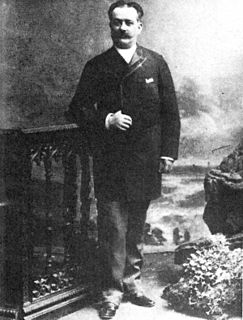
Ricardo Bentín Sánchez was a Peruvian politician, soldier and businessman. He participated in the Peruvian resistance during the Pacific War. He became President of the Congress of the Republic (1913) and first Vice President of the Republic (1915-1919).
















